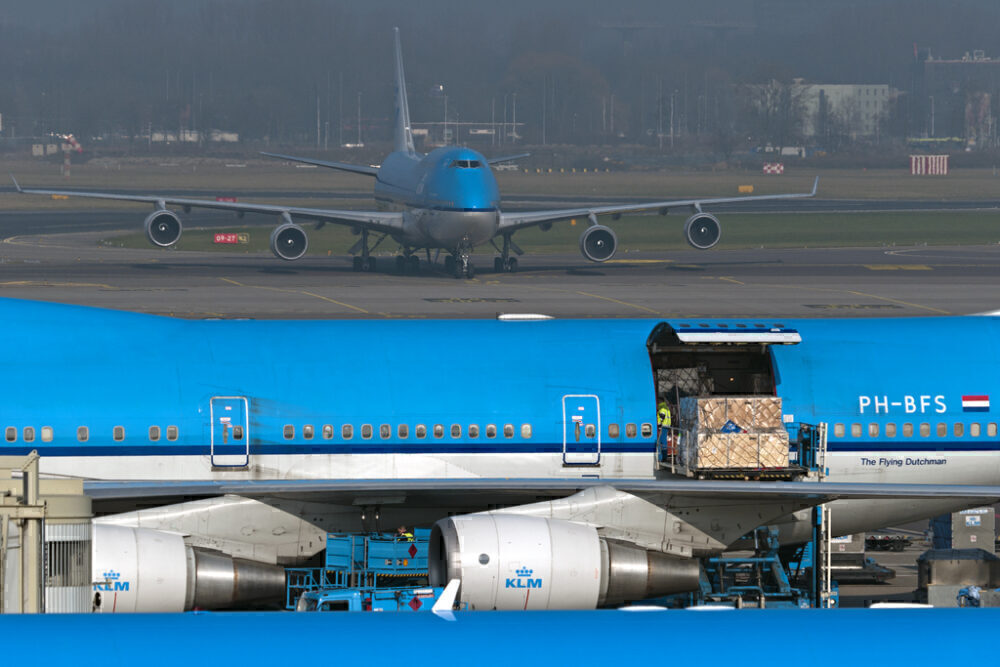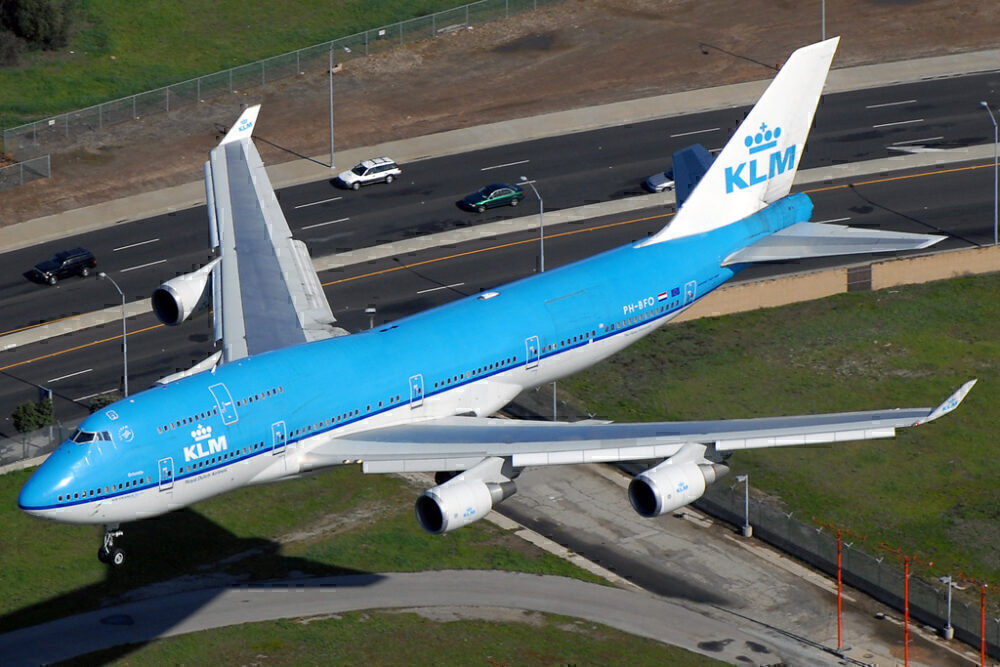The Boeing 747 is, for many, the first aircraft they went long-haul on. It changed aviation significantly, making flying more accessible to more people than ever before. For those airlines that wanted to fly not only a high passenger load but also large amounts of cargo, Boeing created the 747 combi. Here’s what you need to know.

A convertible Queen for flexible operations
The Boeing 747 is an iconic passenger aircraft. The distinctive hump and game-changing range made this aircraft a common sight at the world’s biggest airports in the 70s and 80s. As the years rolled by, Boeing brought us newer, more advanced versions of the type, culminating with the 747-400 in 1989, which would become the best-selling variant of the family.
The 747 was not only popular with passenger airlines, however. Boeing developed a number of derivatives of the model, from high-density domestic versions targeted at the Japanese market to pure freighters with lifting noses for cargo airlines. But what about those airlines that wanted to move both passengers and cargo around the world?

To cater to this need for flexibility, Boeing launched the 747 Combi, an aircraft that offered the combination of passenger capacity alongside main deck cargo space and a proper cargo loading door. It was a unique proposition that proved popular with airlines from the 70s onwards.
Stay informed: Sign up for our daily aviation news digest.

The different combi jumbos
The first official Boeing-produced 747 combi was the 747-200M. This aircraft could carry freight in the rear section of the fuselage thanks to its side loading cargo door. A movable partition separated passengers from the cargo section, allowing for up to 238 passengers in a three-class arrangement.
Following this, the less well-sold 747-300 was also developed into a combi version. Similar to the -200M, the 747-300M had cargo at the back, a side cargo door and passengers at the front. However, with its stretched upper deck, there was more room for passengers.

The best-selling 747-400 launched in February 1989 with Northwest Airlines. Months later, Boeing delivered its first 747-400M, with the aircraft entering service with KLM in September that year. Based on the previous combi versions, it had a large cargo door for loading pallets of freight at the rear, with a locked partition separating passengers and goods.
It’s worth noting that a few airlines also operated combi versions of the very first 747, the 747-100. However, Boeing never produced these itself; rather, they were converted from passenger variants to have a side cargo door and bulkhead separator.
Does anyone still fly the combi 747?
The 747s with the M designation were very specific aircraft. While they were popular with the airlines that operated them, their sales figures were low compared to the other variants of the family.
The 747-200M sold 78 units, the -300M 21 and the 747-400M notched up 61 sales. A major operator of the combi jumbo was Dutch airline KLM, but they were also used by Air France and Lufthansa relatively extensively. Other operators included Air Canada, Air India, Alitalia, Qantas, SAA and Varig.

By the start of 2020, only 10 747 combis remained in operation in the world. The remaining units were all operated by KLM, but they were getting old. Although the smaller, more intimate cabin made for a good avgeek experience, the airline hadn’t invested in its combis for some time, and the cabins were getting tired. KLM planned to phase them out sometime in 2021.
However, the events of 2020 forced the airline’s hand and prompted it to retire the last of the combi Queens early. Several left in March 2020, although three were brought back into service for cargo-only operations. By October, these too had left the fleet.
Did you ever fly on the 747 combi? Let us know about your experience in the comments.
[ad_2]
Source link


